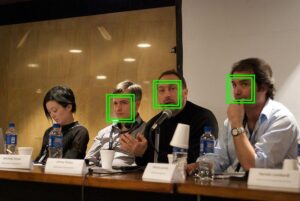
Overview
Exercise Files
About Lesson

Face detection has been around for quite some time. Decades, in fact. It’s in all of our phones, and it is the basis of many AI techniques, including deepfakes. It is in our very human nature, to look for other people, and recognize them by face. So, one of the first technologies developed in AI was the ability to find faces, both in images and in videos.
Face detection programs are different from face recognition in
Exercise Files

No Attachment Found